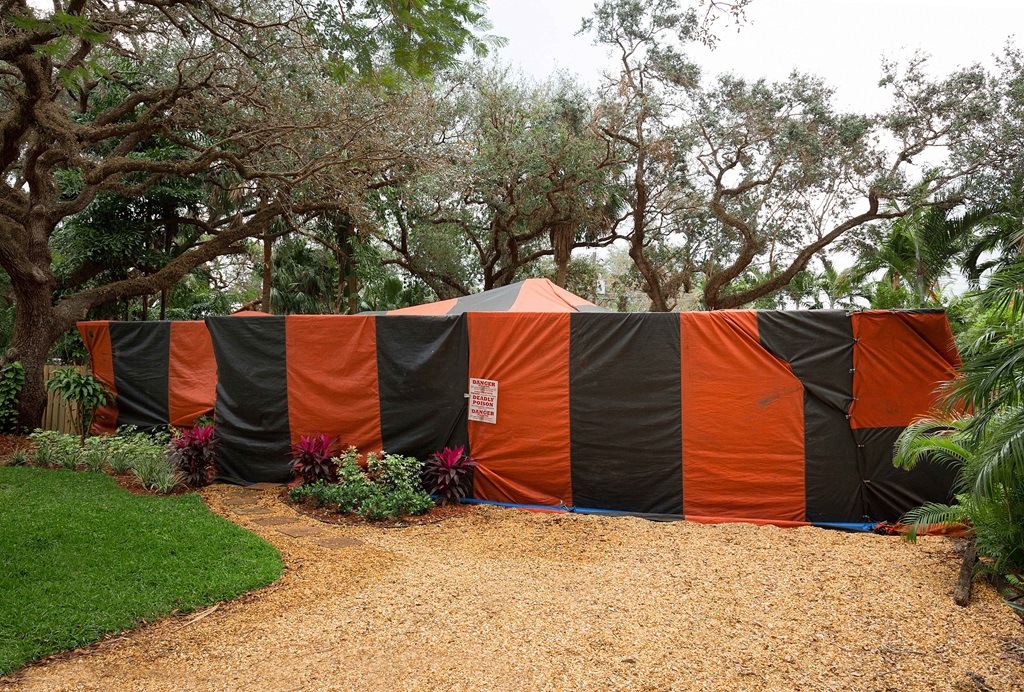Wish we could tell you the eternal Florida summer was a sweet haven, but it’s the breeding grounds for a persistent, wood-munching critter — the subterranean termite. Imagine these little creatures as a quiet storm, barely visible, yet capable of tearing the foundation of your house piece by piece. To combat termite damage, Floridian homeowners often turn to tenting — an all-encompassing fumigation approach reminiscent of a colorful, large-scale kite festival that only entices a very specific kind of pests. But how often should you tent for termites in Florida?
The Tenting Process
Before we pitch our termite-killing tents, it’s important to understand this elaborate dance of death. Tenting, or “tent fumigation,” is when a home is completely sealed and filled with gas to eradicate termites or other pests. Imagine the scene from a sci-fi movie — a tarp covering your entire home, sealing it in an apocalyptic bubble, while a precision gas mix is poised to zap every last trespassing bug.
Tenting is not elegant or gentle, but it is effective. Once structural fumigation is complete, the gas dissipates, the tarps come down, and the little critters that had made your home, well, their home, are nowhere to be found. It’s intense, much like scheduling open-heart surgery for a wooden infrastructure.
Frequency of Tenting
Now, how often for termite treatment? How long does tenting for termites last? How often should you fumigate your house? All important questions. The necessity for tenting frequently hinges on the level of infestation, the species of termites present, and prevailing environmental conditions. Given the humid subtropical climate prevalent in Florida, termites represent not merely an occasional concern but rather a recurrent seasonal issue. “Once-in-a-decade” might peg it, with some homeowners tenting every five to ten years for preventive measures against these relentless invaders.
A regular tenting schedule doesn’t just depend on personal vigilance but is typically recommended by pest control professionals, similar to a car’s oil change schedule given our infamously damp Floridian soil.
Signs that Tenting is Needed
Chances are, if you’re visiting a pest control website or article, you’re not here for the literary wonders of termites. You’re here because something feels awry in your home ecosystem. Signs that could wave the red flag for tenting include finding termite wings around the house (termites shed wings after swarm season), mud tunnels or tubes around the foundation (used as termite thoroughfares), or hollow-sounding wood that’s been feasted upon.
Much like an annual checkup at the doctor’s, an inspection for termites should also be routine practice. It’s not a matter of if Florida homes could be infested, but rather, when they will be tested by these relentless woodworkers.
Short Summary
Tenting from Bradenton termite and pest control is not just an event; it’s a saga in the life of a house besieged by pests. In the world of termites, it’s a ‘Wordle’ win against a never-ending game and one that Floridian homeowners must play with caution and strategy. In the realm of termite tenting, the real victory lies not just in defeating the initial infestation, but in staying one step ahead of these settlers, fleshing out a preservation plan for the very heart of your home — its wooden frame.

